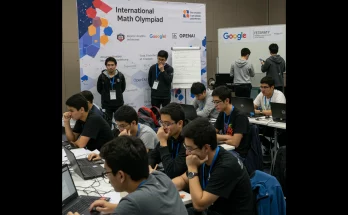In this age of AI, prompt engineering is emerging as one of the most sought-after tech skills, particularly when using powerful chatbots like Anthropic’s Claude.
While it may sound simple to ask a question, crafting an effective prompt is an art form that must be clear, structured, and purposeful.
Anthropic, the company behind Claude, has published an in-depth Prompt Engineering Overview to assist users in honing their prompting capabilities and gaining the most precise, useful responses from AI.
Getting Into Claude’s Mindset
Before typing your questions, Anthropic suggests changing your mental model. Claude should be viewed as “a brilliant but very new employee with amnesia.” It’s smart, fast, and capable but forgets everything between sessions and follows instructions literally.
According to Anthropic, for success, you need to set the stage clearly: know what you want, who the audience is, and what success looks like. Claude even comes with a built-in prompt generator to get you started in brainstorming your first draft.
Be Explicit, Clear, and Structured
When prompting AI, vagueness is your enemy. Claude doesn’t understand style, tone, or purpose unless you dictate them explicitly. Anthropic recommends clarifying the intended audience and the purpose of your request:
- Who is the audience? (e.g., “high school students,” “corporate executives”)
- What is the purpose? Is it to inform or persuade?
Additionally, consider structuring your instructions in bullet form or as a sequence of numbers for clarity.
Use Examples to Set Expectations
One of the most effective techniques Anthropic suggests is to demonstrate rather than simply explain. Providing Claude with clear examples, referred to as multi-shot prompting, can significantly enhance the quality of its outputs.
Whether you’re requesting blog introductions, financial summaries, or coded snippets, including two or three relevant examples can ensure Claude mirrors the required tone and style. This practice also minimizes inconsistencies and applies formatting conventions efficiently.
Prompt Step-by-Step Thought
Another efficient technique is referred to as Chain-of-Thought (CoT) prompting. This approach encourages you to instruct Claude to think through its reasoning step by step rather than jumping straight to the final answer.
When Claude processes information at a slower pace, it yields more accurate and reflective answers—especially valuable for complex tasks such as analysis, planning, or debugging.
Assign Claude a Role
Giving Claude a specific role can also boost effectiveness, a method known as role prompting. You can direct it to act as a writer, digital artist, personal trainer, or any relevant role. Setting this role immediately establishes the expected tone, depth, and parameters.
Minimize AI Hallucinations
AI chatbots are known to fabricate information, known as hallucinations. To mitigate this, Anthropic recommends that you allow Claude to respond with “I don’t know” when uncertain.
It’s essential to cross-check outputs by having Claude fact-check itself once it has generated a response. Request it to quote sources and provide links to ensure accuracy.
While these prompts are beneficial for daily use, it’s worth noting that Anthropic has silently tightened usage limits for Claude Code, as highlighted by TechCrunch, making some user experiences less predictable.
In summary, mastering the art of prompt engineering with Claude requires attention to detail, specificity, and a clear understanding of the AI’s capabilities. By adopting these strategies, users can enhance their interactions with AI, leading to more accurate and tailored responses.



